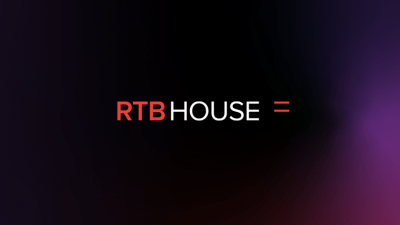Last Updated on: 24th May 2024, 09:43 pm
The end of third-party tracking cookies is on the horizon, but it’s not as bad as you might think. Despite concerns from some advertisers that losing third-party cookies will make it impossible to deliver personalized advertising, there are already a number of effective solutions in the works to ensure that users can still enjoy relevant ads, without any privacy fears.
Let’s take a quick dive into why third-party tracking cookies are being retired, what that means for your advertising strategy, and why it’s actually a good thing for both customers and advertisers.
This article will cover:
- What tracking cookies are and why they are causing privacy concerns.
- What impact Google’s decision to retire third-party tracking cookies will have on targeting technologies.
- How you can best prepare for the cookieless future.
Table of Contents:
- What are cookies, and how do they work?
- Why are people worried about tracking cookies?
- What does the cookieless future mean?
- Will the cookieless future kill retargeting?
- How can advertisers reach users with cookieless personalization?
- Analyze your current toolkit and identify anything reliant on third-party cookies
- Invest in contextual advertising
- Increase the role of first-party data
- Explore advanced technologies
- Avoid unethical targeting practices
- Talk to your adtech partners and understand if they are testing new solutions
- Make the change as soon as possible
- The cookieless future is here – make sure you’re ready
What are cookies, and how do they work?
Cookies are small text files that websites store on your device when you visit them. They are intended to work by enhancing the functionality and personalization of websites. Cookies store little pieces of information, allowing websites to remember your preferences, such as your language or how a site is arranged.
There are two main types of cookies:
First-party cookies: These come from the website you’re directly visiting. They help the site remember your preferences to give you a more personalized experience.
Third-party cookies: These come from other places, like advertisers or social media buttons on the website. They track your online activities across websites to show you ads or content tailored to your interests.
Cookies are meant to make your online experience smoother and more tailored to your preferences, and users can control them through their browser settings if they want more privacy.
Why are people worried about tracking cookies?
It is important to remember that we are not talking about cookies generally. First-party cookies, which store user data for a specific site, are an important part of how websites function and are generally not considered a point of concern.
The problem is third-party cookies, which are used for ad retargeting and behavioral advertising across websites. These cookies are great for delivering personalized ads, however, they track users all over the internet to gather data about them, and this has raised a number of significant privacy concerns. This has already led to many browsers, such as Apple’s Safari or Mozilla’s Firefox, eliminating or limiting third-party tracking cookies.
What does cookieless personalization mean?
In the cookieless landscape, advertisers will need to explore alternative methods for targeting and measuring the effectiveness of their campaigns. This shift is prompted by changes in web browser policies, privacy regulations, and a general trend towards safeguarding user data. Without relying on cookies, marketers may turn to strategies such as contextual targeting, which focuses on the content of the web page rather than individual user data, to maintain relevance and engagement.
Additionally, the industry is exploring advanced technologies using Artificial Intelligence to develop sophisticated targeting techniques that do not compromise user privacy. The shift towards cookieless personalization not only challenges advertisers to adapt but also prompts a broader conversation about the balance between personalized advertising and user privacy in the evolving digital landscape.
While the transition to a cookieless future poses challenges for marketers, it also presents an opportunity to build trust with consumers by adopting transparent and privacy-friendly practices. Engaging users through explicit consent for data collection, ensuring clear communication about how their information is used, and exploring ethical advertising solutions will become essential strategies in the evolving marketing landscape.
Google is trying to balance advertiser and user interests
Chrome has a market share of around 65%, so any decision made by Google has an enormous impact on the advertising industry as a whole. This is why it has taken Google so long to actually retire third-party cookies since the initial announcement in June 2021. The deadline has been pushed back multiple times, until early 2025 for now, in order to provide advertisers with the time they need to prepare for the cookieless future.
At the same time, Google needs to play a difficult balancing act. On the one hand, 79% of users are concerned about how their data is being used, and this has led to an explosion of ad blockers, with 34% of U.S. users using them and rising.
On the other hand, advertisers are worried that they may be unable to effectively target users with beneficial ads. However, if the privacy issue is ignored, then the advertising industry may lose the ability to directly reach out to users with personalized ads anyway as people take the problem into their own hands and simply disconnect. That would be bad for businesses and bad for users. Instead of fighting against the cookieless future, we should adapt to it, which brings us to our next question.
Will the cookieless future kill retargeting?
The short answer is: no. At least not if you are willing to adapt your methodologies to deal with the new online landscape. In fact, the cookieless future may usher in a new era for retargeting by encouraging the development of cookieless personalization strategies instead.
The elimination of third-party cookies is primarily a problem for advertisers who rely on invasive tracking methods for behavioral retargeting. These methods typically require a lot of specific information about a single user, usually taken from multiple sources.
Advertisers will be able to take advantage of the solutions already built by Google and its ad-tech partners. The Google Privacy Sandbox is testing a number of ID-less methods to group users and deliver personalized adverts to them. RTB House has been deeply involved in this process and has helped define the direction of the FLEDGE proposal.
Google FLEDGE is a cookieless solution that allows using first-party advertiser data to place users within interest groups. Advertisers are then able to use these interest groups to deliver personalized ads to these users, without knowing the identity of any single user contained within that group.
RTB House developed two additions to this solution from the ground up:
Product-level Turtledove (PLTD): Stores data on the products a user interacts with, within that user’s browser, enabling personalized product recommendations without knowing who a user is.
Outcome-based TURTLEDOVE (OBTD): Uses the same approach to store signals, that help advertisers evaluate each ad impression in a better way. These signals can serve as specific variables, such as the value of products in the user’s basket. This can be used to better evaluate the bid price for a user in a private ad auction. Importantly, none of these signals can be used to re-identify and track an individual.
How can advertisers reach users with cookieless personalization?
The shift to anonymized datasets means that successful advertisers will be competing on how well they can interpret first-party data, rather than how much individual data from multiple sources they can collect. Companies with strong artificial intelligence solutions, like RTB House’s Deep Learning algorithms, will be better equipped to function in this new environment than those without.
With this knowledge, there are a number of ways that you can prepare yourself for the cookieless future, and we’ve compiled a checklist to help you do just that.
Analyze your current toolkit and identify anything reliant on third-party cookies
This will enable you to figure out which solutions are worth phasing out, and help you understand what new solutions you will need to bring in to replace them. Additionally, you should assess the compatibility of existing tools with emerging technologies and privacy-centric alternatives to ensure a seamless transition.
Invest in contextual advertising
For regular targeting (used in branding campaigns), you should focus on contextual targeting solutions based on the content of the web page rather than behavioral ones and individual user data. This approach ensures relevance without relying on personal information, aligning with the shift towards privacy-centric practices.
Increase the role of first-party data
First-party data is a great way to understand your users. This could either be data for retargeting that you, or your client, already own from the people using your site, or it could be data useful for branding campaigns that originate from publishers about the users visiting their websites, which are unknown to you. While these two data sources cannot be tied together to re-identify users, they can be used for different purposes. Understanding how to properly use first-party data will give you a huge edge in the cookieless future.
Explore advanced technologies
Embrace Deep Learning and Artificial Intelligence to develop innovative targeting techniques. These technologies can analyze user behavior patterns without relying on cookies, providing insights that contribute to more accurate audience targeting.
Avoid unethical targeting practices
While these techniques may seem effective on a small scale, they replicate the privacy issues associated with third-party cookies. External identifiers and device fingerprinting collect extensive data to create a unique user profile, but embracing such technologies may lead to short-term gains while falling behind in the long run as the industry and regulations prioritize privacy-friendly advertising solutions.
Talk to your adtech partners and understand if they are testing new solutions
Google is already making it possible for adtech to participate in the trials of its new solutions, notably FLEDGE. This provides advertisers with the opportunity to see how these solutions work in the real world, and tailor their approach.
Make the change as soon as possible
Those who embrace cookieless personalization early on will gain a substantial advantage over companies still using outdated methods. That’s why, since the announcement of third-party cookies deprecation, RTB House has been actively collaborating with Google and other ecosystem partners on this matter.
As you’re reading this, Google has already provided access to test the Protected Audience API and other Privacy Sandbox Solutions on a larger scale (currently, almost all Chrome users are Privacy Sandbox-enabled). Make the most of this opportunity to familiarize yourself with these solutions and equip yourself for the conclusion of 2024, when third-party cookies will be officially deprecated.
The cookieless future is here – make sure you’re ready
The best time to prepare for the cookieless future was yesterday, the second-best time is right now. While the transition to a cookieless future poses challenges, it also provides an opportunity for the advertising industry to innovate and find more privacy-conscious ways to deliver personalized content. It’s important for advertisers to adapt to these changes and embrace new approaches that prioritize user privacy while still meeting the demands of personalized advertising.
The RTB House team has been working hard on new solutions that are designed to operate perfectly in the cookieless future. Our Deep Learning algorithms are brilliant at interpreting complicated, even unstructured, datasets and drawing actionable conclusions. We are at the forefront of testing cookieless personalization solutions, prioritizing those that represent an improvement in terms of upholding users’ online privacy—a factor valued by regulators worldwide.
If you’d like to learn more about the cookieless future, how you can prepare for it, and the solutions we’re building to help you, reach out to us today!





